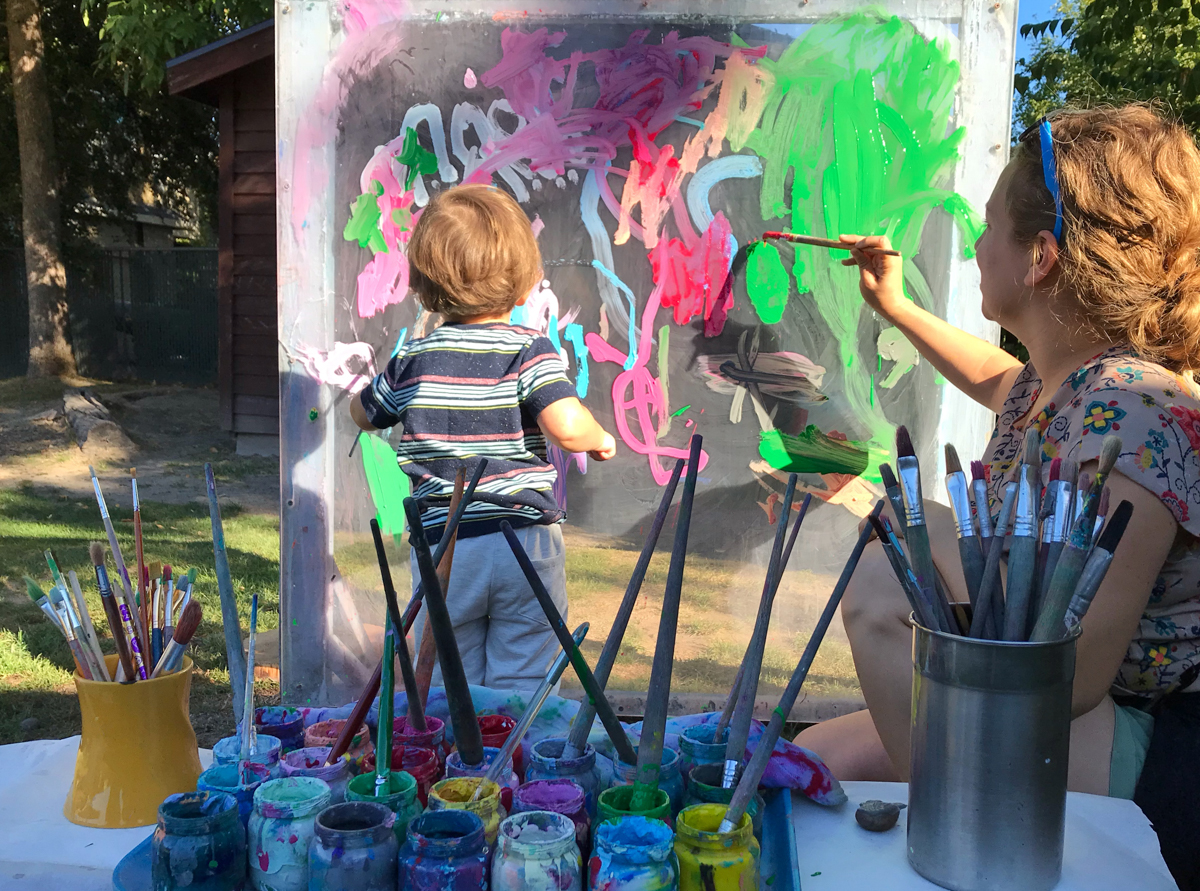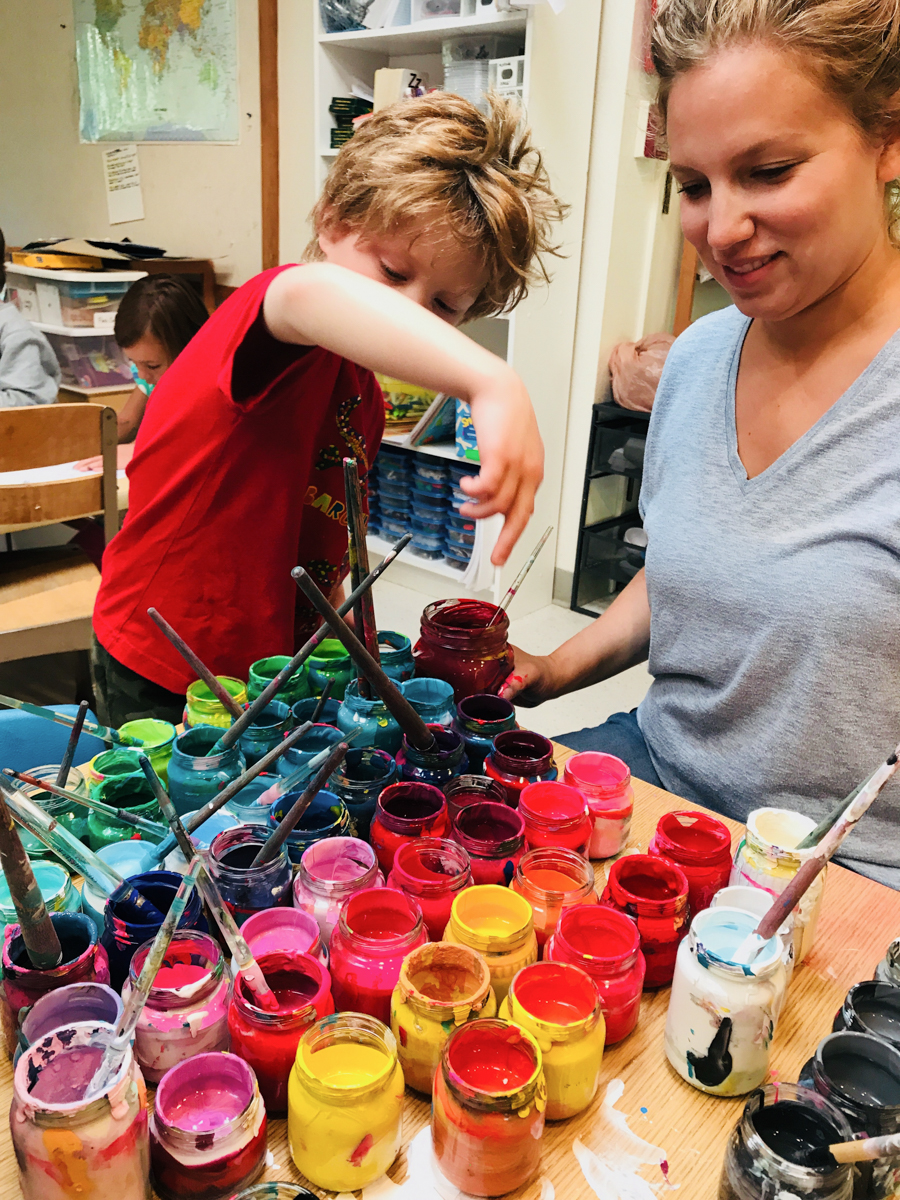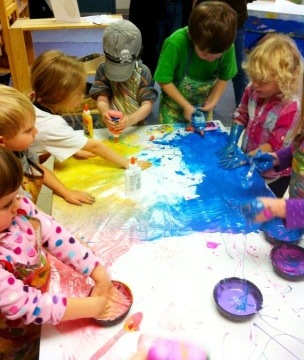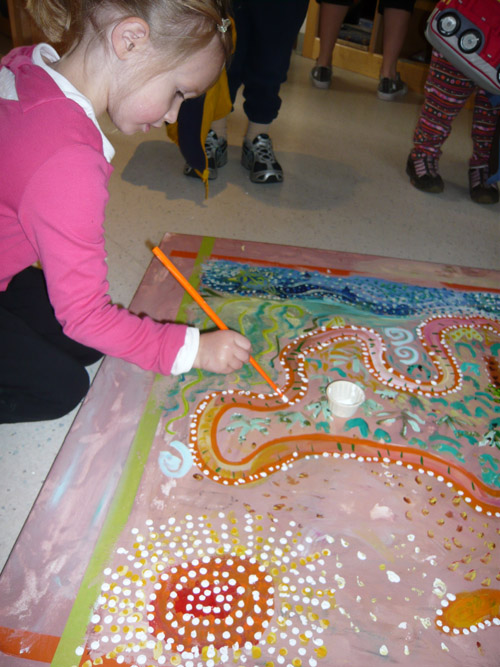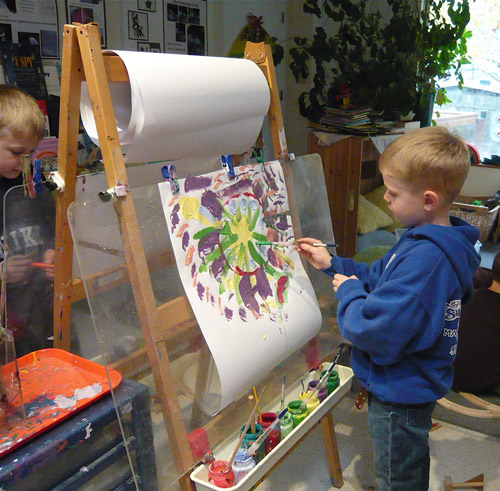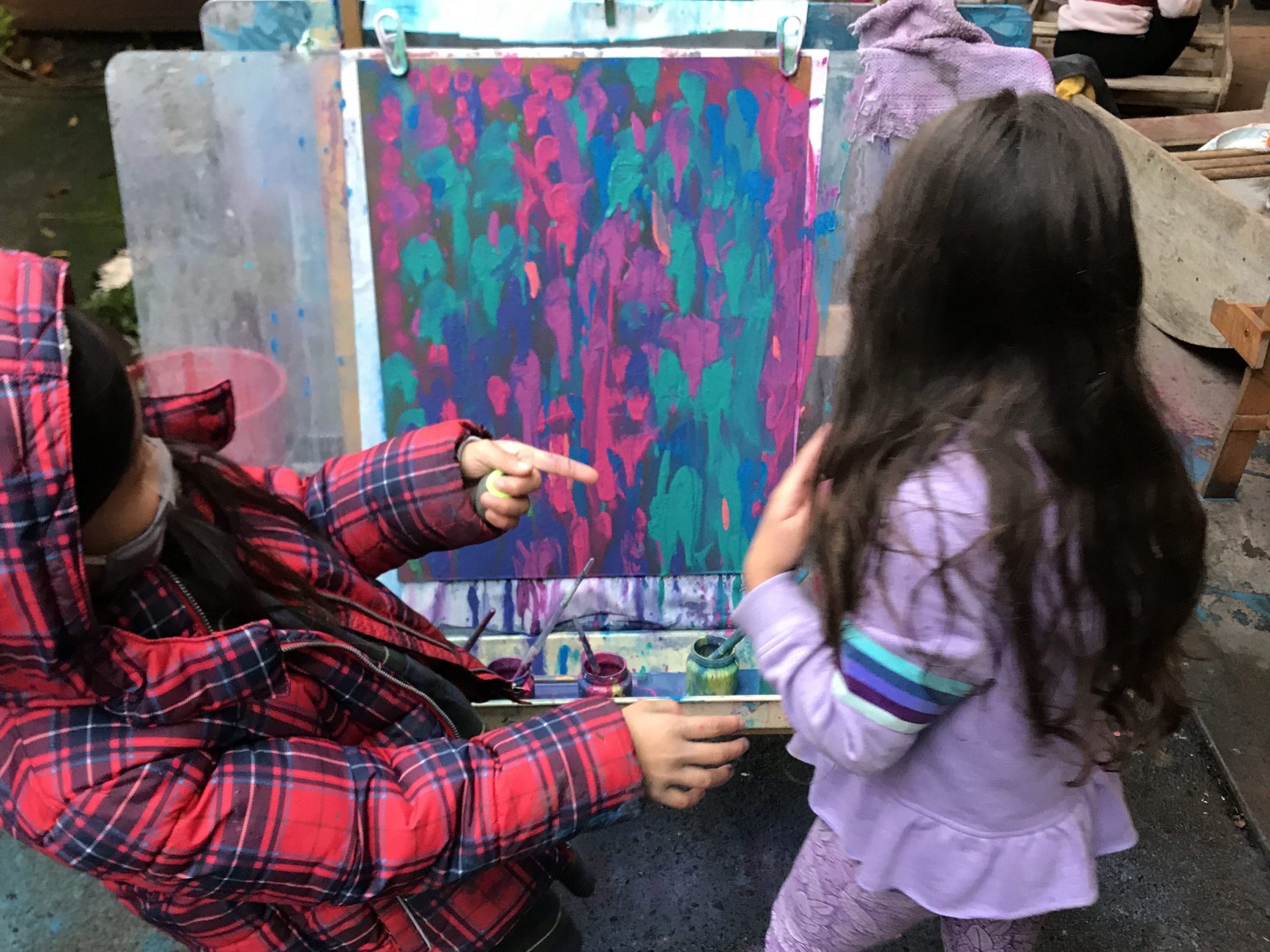
Children are born motivated to seek meaning, learning about the world and how they fit in. When we offer “open ended” experiences with paint, we support their motivation to learn in fun and meaningful ways. Take a look at the following images, and see if you can imagine what the children might be wondering about. Is the child focused on the sensory sensations of the paint? The movement of their hands and the cool and slippery feel? How about the sounds the paint makes as it squishes between their fingers, or the sight of the shades and colors? Is the child watching the movement of the brush as the paint flows onto the paper? Are the children connecting socially as they work together sharing space and materials?
The “language of paint” supports children as they build an understanding of the world. Painting helps them to think through their ideas and share their point of view. By providing daily opportunities, children learn to harness the power of paint and lean into it’s possibilities. When teachers step back and joyfully observe the children’s explorations, we not only support their development, but ours as well.
Picasso famously said, “Every child is an artist. The problem is how to remain an artist once we grow up.”
